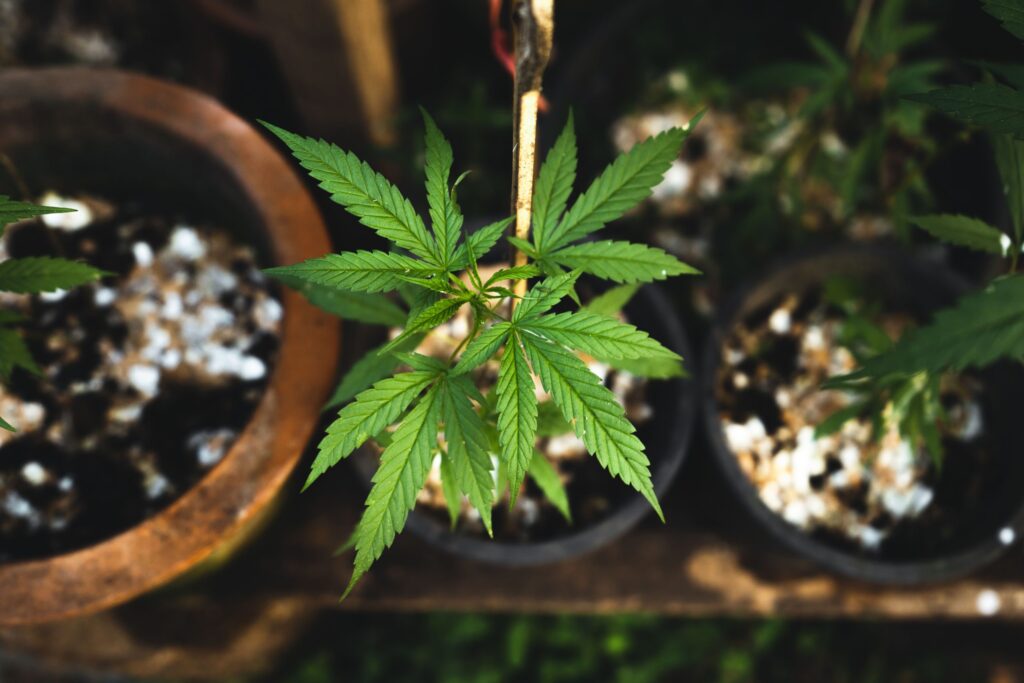
Growing weed indoors can be a fun and effective way to grow either Indica or Sativa plants. But when growing Sativa, you need a bit more patience and attention to detail for a robust harvest.
This process may seem intimidating for a beginner, or even experienced Indica and Hybrid growers.
Luckily, this guide will give you all the steps you need to effectively grow Sativa Weed indoors.
And – if you put in the time and care, growing Sativa indoors can bring you a unique, flavourful product with an energetic high.
First, choose a large space for your Sativa plants, as they grow much taller than bushier Indica strains.
Next, to set yourself up for success, start with a genetically superior Sativa seed from a reliable supplier, and ensure the strain you buy is fit for indoor growing. You may also want to purchase feminized seeds to guarantee high yields.
To optimize indoor cannabis growth for your Sativa plants, you want to pay attention to and invest in specific lighting. Regular house lights, or sunlight, will not be adequate to support the ideal growing conditions for your plants. Choose purpose-built LED or HPS lights to grow the largest, healthiest plants possible.
When your seeds have arrived and you’ve got your grow space with lighting and humidity control, you are ready to get started!
To Germinate your seeds: place them in a glass of water for 18-24 hours in an unlit, warm space. When the seeds have sunk to the bottom, you can pour out the seeds and place them on a paper towel.
Ensure the paper towel is moist, but not soaked. Check the seeds in the paper towel every 4-8 hours as you also don’t want them to dry out. Make sure you are still keeping them in a dark and warm environment. This step should take about 2 days.
When your seeds have developed tap roots (at least ¾ – 1 inch), you can take them out of the paper towel and pot them in a mixture of any high quality bagged soil by placing soil in a small pot, poking a hole, placing the germinated seed in the hole, and covering gently with soil.
Young cannabis plants thrive with high humidity, so many growers choose to use a humidifier at the early growing stage. You can also take a plastic cup or cut the top of a bottle to place over the seed and assist sprouting. The ideal humidity rate in the first two weeks is around 70%.
Some growers suggest not adding nutrients or grow feed for the first week of life. After that, you can feed them with fertilizer concentrate nutrients, up until the last two weeks before cutting.
Most fertilizer brands will provide you with a feed schedule, or you can follow one that promotes Sativa flowering. Generally, you want to ease into fertilizing, so as to not overwhelm the young plants, and then increase nutrients (especially Potassium, while decreasing Nitrogen), towards the flowering phase.
During the early stages to grow sativa weed indoors, you can give your plants a minimum of 16 hours of light, though most growers use a routine of 18 hours of light with six hours of darkness. To start the flowering phase (around 2 weeks in), reduce light to 12 hours a day, with 12 hours of darkness.
Once your plants have reached the flowering stage, you can transplant them to larger pots or grow bags, at least 5 gallons in size. At this phase, you want to let your plants rest for a couple days to recover from the transplant and water once every two days, about a litre each plant, increasing slightly as you go.
As your plants begin to grow in size, you can tie down primary branches to allow secondary stalks to grow taller and create a thick canopy.
Check on your flowering phase plants every couple days, and make sure to reduce humidity within a range of 40-50%. You want to continue to monitor humidity throughout the process to reduce the chance of mold and losing your crop.
When you get close to the eight week mark, start to monitor your plants for yellowing leaves (this is normal), and on your tall branches, heavier and hanging buds. If the branches can’t support the weight, you can tie them up with hemp rope to help them get to full size in this final stage.
Keep in mind, Sativa plants can take longer to produce full-grown results, but when the flower no longer appears to be getting larger, you can switch to just giving them water a few days to a week before harvesting. This flushing process to grow sativa weed indoors will also help you reuse your soil.
Cut, and hang your plants upside down, removing the largest fan leaves. You want to use sharp trimming scissors and then hang your harvest in a dark, humidity controlled environment, with a fan, air conditioning, or dehumidifier.
Be patient during this part of the process and let it dry for 5-7 days. Continue to keep humidity controlled and ideally at around 50%, and then you’ll be ready to trim.
Once again, use sharp tools to trim your cannabis down to a size for storage in smaller containers. Ideally, you want to use airtight glass jars for storage.
Once you have trimmed your dried cannabis, place it in the jars, and again keep humidity at around 55-65% (you can get a hygrometer to monitor humidity).
Now, you want to leave the jars sealed, except to open them once or twice a day for the first month, and then about once a week for another month for fifteen minutes or so each time. This process is referred to as burping.
Now that you have germinated, grown, harvested, dried, and cured your Sativa, your hard work and patience has paid off.
Your Sativa harvest is now ready for long term storage and use!
Continue to store in a cool, dry environment for 1-2 years, and enjoy the beautiful, euphoric effects of your Sativa strain.
”


WE ARE EVERY GROWERS ONE STOP SHOP TO ACQUIRE PREMIUM CANNABIS SEEDS FOR SALE IN THE USA, CANADA AND AUSTRALIA
Farmers Lab Seeds 2024,
All Right Reserved
Seeds are sold as novelty items, souvenirs, and collectibles. They contain 0% THC. We encourage our customers to check the legislation in their Country, State, Province, and Municipality prior to purchasing items from our store. We do not provide growing information.
All seeds are sold as hemp, and lab tested under 0.3% THC. This product is not for use by or sale to persons under the age of 21. This product should be used only as directed on the label. It should not be used if you are pregnant or nursing. Consult with a physician before use if you have a serious medical condition or use prescription medications. A Doctor’s advice should be sought before using this and any supplemental dietary product. All trademarks and copyrights are property of their respective owners and are not affiliated with nor do they endorse this product.
These statements have not been evaluated by the FDA. This product is not intended to diagnose, treat, cure or prevent any disease. Individual weight loss results will vary. By using this site, you agree to follow the Privacy Policy and all Terms & Conditions printed on this site. Void Where Prohibited by Law.